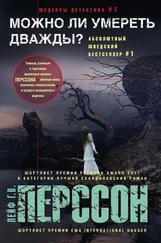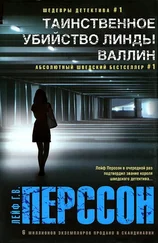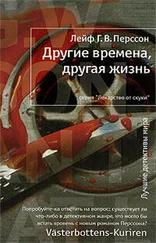Liska was given money to set up his own movement. His first step consisted of putting together the ten or so colleagues he had come to rely on most over the years, and he located the head office for his little firm in Stockholm, just close enough but at the same time far enough away. He felt comfortable in Stockholm. It had a little of both Akron, Ohio, and south Pest, Liska thought, and he would know, having lived in Sweden’s capital for a few years in the late seventies when he was posted to the American embassy in Stockholm.
“Okay,” said Liska at the first meeting with his colleagues. “I guess you’re wondering what we’re doing here.” From the expectant nods he understood that this was a completely correct assumption. “I’ve got the idea,” he continued with a deliberately drawling Midwestern accent, “that our dear comrades in the German Democratic Republic are going to be turned upside down.” He deliberately paused and dug in his left ear with his ballpoint pen. “And then I thought we should take the opportunity well in advance to buy their lists of the various collaborators they’ve made use of over the years.” Liska took the pen out of his ear and inspected it thoughtfully. “So what this is about in concrete terms is that we have to find some person or persons on Normannenstrasse willing to earn a few bucks,” he said and smiled. It was no more difficult than that.
The East German security service, Ministerium für Staatssicherheit, or Stasi as it was called in everyday usage, was without comparison the largest security organization within the Eastern Bloc. In relative terms, and depending a bit on how you counted, it was between ten and thirty times larger than the Russian KGB.
At the time of the collapse of the German Democratic Republic, the Stasi had 102,000 employees and about half a million so-called external colleagues — informants, infiltrators, provocateurs, and not counting plain old gossips — in a country with a population of seventeen million people. When the defeat of communism became a fact and there was a green light to inspect the Stasi’s registry of individuals, it turned out that security files had been compiled on more than six million of the Republic’s own citizens and almost a million foreigners.
It was information about the latter that interested Liska and his comrades in the security agencies of the Western world. It was enemies of Western democracies they wanted to get at, and what they were searching for above all else was the information being stored at Stasi’s own foreign intelligence service HVA — Hauptverwaltung Aufklärung — with 4,286 employees, headquartered at Normannenstrasse 22 in East Berlin, under the leadership of the legendary “Carla,” Lieutenant General Markus Wolf.
The Germans had a well-founded reputation for being precise to the point of pedantry, and the filing of various types of information had long been one of their best areas. In the HVA register, according to what the CIA thought it knew, the names of fifty thousand individuals in round numbers were stored who in various ways had helped the East Germans with their “foreign affairs” over the years, from the most qualified spies to the most vacillating sympathizers; it helped that the registry was computerized.
Thus it was not a matter of having to move tens of tons of files, which would have been an impossible task; instead the desired information fit comfortably on large-format computer tapes. At the same time the data was not too big to fit into an ordinary briefcase or even under a uniform jacket in a pinch, obviously assuming the carrier was sufficiently well motivated.
Liska knew from his own experience that almost anything — and anyone — could be bought with money. The disposition of this information was a matter, quite literally, of power over fifty thousand lives, and not just any lives. Assuming that the Western intelligence agencies could find out who these individuals were and what they had been working on, there was also the possibility of affecting the existence of hundreds of millions of other people in both a positive and a negative direction. And for that no price was too high, thought Liska.
Liska was of course not the only one who had this idea. There were a number of others who had been thinking along the same lines for several years, and not least within the organization to which he himself belonged. Therefore the usual bureaucratic catfights had also started to break out within the organization, and when the fog finally cleared, the visible results consisted of a steering group of three individuals who had the power and the money; a reference group of experts and those people who simply had to be humored; a project group that would do the job itself; as well as a number of auxiliary groups, one of which Liska headed; these latter groups would be responsible for the coordination of various field efforts: the one goal, a number of people, a bag of money that for once was ample, and of course the highest imaginable level of secrecy. Everything was, in other words, for the most part as usual, and of course it had been given a project name, Operation Rosewood.
When the Wall fell the Stasi also fell apart like a house of cards. Suddenly everything was for sale, and because it was a matter of getting there first if there was going to be any money worth talking about, it was the seller who made contact with the buyer. At the end of November 1989 an officer of the Stasi, who was not particularly high ranking but was stationed in the right place, brought a copy of the computer tapes with the names of all the GDR’s spies and contacts abroad to a Russian colleague at the KGB office in Berlin-Karlshorst. From there the computer tapes were sent by air to the KGB in Moscow so that the sellers from the Stasi and the KGB could finally meet the purchasers from the CIA and calmly and quietly do business in person. On Tuesday the fifth of December 1989 everything was ready. The computer tapes were exchanged for dollars, hands were shaken over the deal, toasts were made with Russian vodka and Russian champagne.
The tapes had been acquired at a bargain-basement price, which did not surprise Liska, who had experienced the Second World War as a small child and the Hungarian Revolution as a teenager and had observed with his own eyes that sometimes a human life was not worth anything at all. Here in any case the sellers reaped a hundred dollars a head, he thought, shaking his own sympathetically.
The evening when Major Manfred Sens was about to choke on his coffee in his apartment in Prenzlauer Berg in Berlin, Liska had been invited to dinner in the fashionable Stockholm suburb of Djursholm more than six hundred miles to the north, but in contrast to Sens, Liska would not have time for any coffee that evening. Something he could live with, by the way, because his waiting would soon be over.
His host was an old acquaintance from the early seventies who was now working as an adviser in the Swedish government offices, where he was officially occupied with research and future issues, but in reality functioned as the prime minister’s extended arm whenever a matter concerned Swedish national security.
Their acquaintance had been far from unproblematic. During the early years it had even been so complicated that the slightest official scrutiny would have meant serious problems, not only for those most closely involved but also for their superiors and the national interests they represented. Now, however, the situation was different, and the fact that the Russian bear was on the ropes had also in a very tangible and positive manner eased the association between Liska and the Swedish government’s top security adviser. “To put it simply, the Swedes don’t need to be so damned moody anymore,” as Liska himself summarized the geopolitical background when he was discussing it with one of his bosses at home at Langley.
Читать дальше












